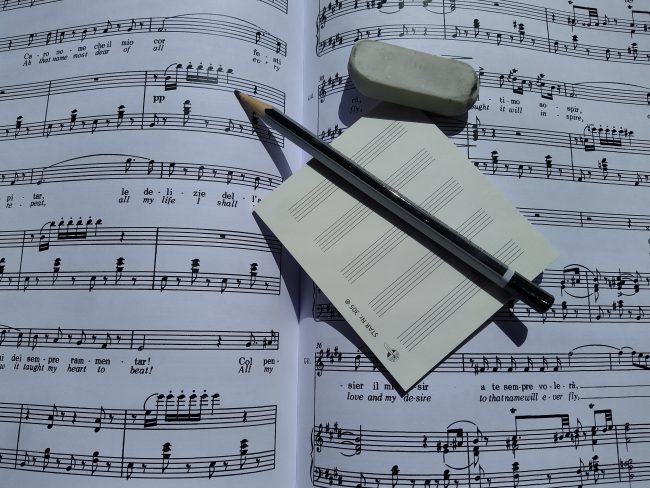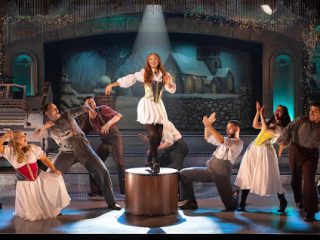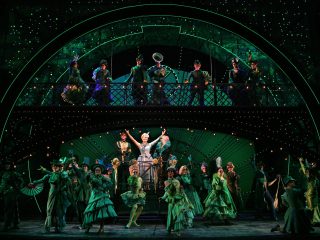Okay, so perhaps that headline was a little clickbait-y. There are hundreds of little steps to take to learn an aria from an opera, and they perhaps aren’t that easy, but when thinking of learning anything it is great to have a plan. Whether this is your first aria, or you’re a seasoned pro, I hope you will find something useful in my 10-step plan, in which I break down the work of learning an operatic aria.
So, grab your score and a pencil, and let’s get started.

1. Make at least three copies of your aria
I’m assuming by this point you know the aria you want to learn. If not, take a look at some StageAgent guides for inspiration. I would always recommend starting with something that you can sing comfortably right now, and building to the more dramatic ‘fireworks’ arias when you’re ready.
Some of my favorite starter arias for each voice type include:
- Soprano: L’ho perduta, Deh! Vieni non tardar, Piangero, la sorte mia, Vedrai carino, Es lebt eine Vilja
- Mezzo: Voi che sapete, Ombra mai fu, Il segreto per esser felici, L’amour et en oiseau rebelle, Che faro senza Euridice
- Contralto: Che faro senza Euridice, Priva son, d’ogni conforto, O miseri mortali
- Countertenor: Che faro senza Euridice, Ombra mai fu, O too lovely, too unkind
- Tenor: Where’er you walk, Alles fühlt der Liebe Freuden, Eh hop! Eh hop! Place a mercure, Wrong is never right
- Baritone: Bella siccome un angelo, Der Vogelfänger bin ich ja
- Bass: O Isis und Osiris, Ho capito, When villains ramble far and near Ladies don’t fright you
Once you’ve chosen an aria, get yourself a copy. Vocal scores can be expensive, so if you’re just starting out, you might like to buy a collection like these (available for all vocal ranges), which will have several good starting arias included.
Then, make at least three copies of your arias. Remember, if the edition is still in copyright, you will need to own your own copy of the music, or borrow one from the library, but it is legal to photocopy music for your own private study.
Make sure you secure all the pages together in some way. My favorite way to do this is to double-side the copies, then staple down the left edge, so I can easily turn the pages. Some people like to single-side and use tape to make ‘hinges’ at the top and bottom of the page.
Before you think three copies is excessive, I promise you will use them!
Mark one copy ‘Accompanist copy’. This is the copy you keep in your folder for your accompanist to play from, while you use another copy. If you want to save on copies, you could also designate the original book as the accompanist copy. On the whole, this copy will have limited markings on, only where you need to mark a cut, or an important breath mark.
The second copy will be your ‘study copy’. This will become the most marked copy.
The third copy is your ‘working copy’. This is the one you use in lessons, coaching, and in masterclasses (sometimes the master wants a copy of the music to work with). This will be a mostly clean copy, with a limited amount of notes you have picked up from lessons and coaches.
2. Who are you?
Before you start learning an aria, find out which character you are playing. You could read the character descriptions on StageAgent, watch the opera, or read through the rest of the score. Start making notes in your study copy:
- Who is this character in the opera?
- Are they based on a historical figure?
- How old are they?
- What are their family relationships like?
- Are they human or mythical?
- What happens to them?
- What is this aria really about, is it a metaphor for something?
Make notes on your study copy to refer back to later. If there’s a lot of detail, you might want to write on the back!
3. What are you saying?
Now, using your ‘study copy’ again, we start the real work. If you’re going to sing these words, you need to know what they mean. Even if the aria is in your native language, it is likely to be poetic or archaic. Make sure you know what every word means, as well as what the sentences and paragraphs mean. Could you say each line in your own words?
I like to write the translations in different colors on my study copy, one color for the direct translation, and another for writing the line in my own words.
4. Learn how to say the words
So, you know what you’re saying, and who you are. Now you need to learn how to say each word and sound. Working with a good coach will be essential in your preparation at this stage, but there are many places you can begin before you take the work to a coach (and save yourself $$$!)
One place I would recommend starting, if your aria is in Italian, French, or German, is this book: A Handbook of Diction for Singers by David Adams
It’s quite in depth, but you will find specific explanations and examples of each sound in a particular language. You will also be introduced to the International Phonetic Alphabet (IPA) symbols for each sound in the language. Starting to become familiar with spotting whether a vowel is open or closed will be a really useful skill long term.
There are also other guides available which are less in depth, and might get you singing faster. For Italian, you could start with the Vaccai Vocalises, which have a nice explanation of how to pronounce each sound at the beginning. The exercises are really valuable as well, but the rules of pronunciation are translatable into your aria.
Again, make notes on your study copy. Once you become really familiar with the symbols you can start to use IPA wherever you need a hint, but you could start with ‘sounds like ___’.

5. Warm-up your voice
Confession time: hands up how many of you start learning a new song or aria before you’re properly warmed up? Don’t worry, both my hands are high in the air. We know from experience it’s not going to work, but we are so desperate to get straight into the music that we want to jump right in.
Now, slow down, step back, put the score down. You have to start with your warm-ups. Get your voice into a good shape before you start to work on the aria. It will save you so much time in your learning, as you will know which problems are technical challenges, and which parts are just because you went in cold.
6. Learn the music
Like skipping the warm-up, quite often, singers will start at this point. That’s natural! The reason you want to sing this aria is probably because you love the music, so it makes sense for you to want to skip forward and start here. If that’s the case just make sure you go back and do the other steps as well.
For this section, grab yourself a piano, and take your time. You want to start slowly on everything and build up. Remember, all practice is building new pathways. It is likely that the first time you start to work through the music of an aria, it will not sit comfortably in your voice. Be patient, work slowly, repeat often. Those are the golden rules of music learning.
Not all music learning has to be done with singing, either. You can spend a lot of time working through the rhythms, playing the line, and listening to the orchestration. When you are first learning the vocal line, try to leave out the words. Use other singing sounds, such as you might do in your warm-ups and exercises.
Using your study copy of your aria, make sure you notate any vocal things you might need to think about. Each time you take the aria to your teacher, use a clean copy (that third copy you made) and make fresh notes of anything you need to practice. These can be copied into your study copy after your lesson.
7. Put it together
Once you are fairly confident with the notes, and can speak the words through with the correct pronunciation, you need to start putting them together. Again, start slowly, be patient, and repeat often.
When incorporating a new language, or unusual words into a melody, you might find that some things cause you unwanted tension that conflicts with your technique. This is where you will need to consult a teacher. Always go back to good vocal technique first, and fit the pronunciation of the work into your technique. Then when you work with a coach, they will tell you if the pronunciation is clear and correct enough.
Remember you have a clean copy for your coach to read from. Make sure you go through and mark in any breaths they will need to know about, or any cuts you make have made in the aria.
8. Prepare your character
The same amount of work that you did on the language, and on the music, now needs to go into creating your character. This is where point 2 really starts to help you. Not only do you know how to sing your aria, but you should also know who is singing the aria, where they are, and when they are (in time and in history). These things will give you some pointers as to how your character might stand, walk, and move.
Next start to think about what your character wants in the moment of this aria. Do they want help? Do they want to tell someone off? Do they want to show the audience how sad they are? Do they want someone dead? Do they want to marry someone?
When you work out what they want, ask how are they going to get what they want? Much of the evidence for this will be in the language.
Sometimes, the moment your character is experiencing needs to be informed by the context of the rest of the opera. The aria never exists alone, so make sure you know what has happened before this point in the opera.
Make sure you make these notes, again on your study copy, so when you come back to this aria again in future, you still have all your research.
Now, with all of those things in mind, get on your feet and move as your character. As often as you practice the singing, practice the characterization of the aria.
9. Move!
We spend a lot of time learning arias at the piano, or standing in front of a music stand. This can create quite a bit of stiffness in our delivery of an aria. Of course, if we are performing in the context of the opera, we could be doing anything!
Move around whilst you are singing your aria. Play recordings and set the scene in your practice space, and work through a scene. It really doesn’t matter exactly what you do, just move yourself around whilst you are working.
I love to dance my arias. I am not a good dancer, but that is unimportant. In the safety of my practice space, I can imagine I am the most graceful and wonderful dancer. There is so much freedom to be found in moving your body with the music and the emotion of the words. Move as you, then consider how your character might dance this aria. Spin around, jump, crawl, leap, do fancy footwork, just move your body as the music takes you.

Then, bring yourself back to that ‘audition’ stance, and see how much more freedom you have found.
10. Perform
An aria is written to be performed. It is not written to be sung in the shower, or to be kept to your practice room, it is written for performance. If this is your first aria, that performance may be as simple as getting your coach or accompanist to join your singing lesson with your teacher, and actually performing for your teacher. It could be in front of a few members of your family or friends, or you could put the aria forward for a local music festival or competition.
This is a really important step in learning an aria. You will learn things you never noticed before in the moment of performance, no matter how many times you have performed the aria before, and no matter how much practice you have put in. There is always something new in the moment; that is the beauty of performance.
So, how do you learn your arias? Do you follow a breakdown like this, or are you a serial skipper? Do you start singing before you’ve warmed-up, or do you learn the music first? Or do you do all of the work on the text before sitting at the piano? Everyone will have their own style, but hopefully this plan will help to guide your learning, whether you are looking at your 1st aria or your 101st.














